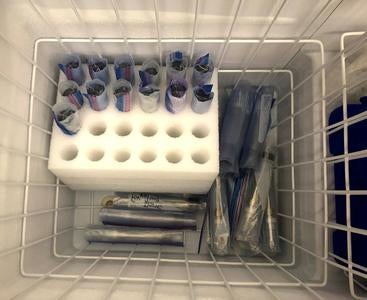
A number of recent popular media and peer-reviewed journal articles have reported a decrease in pollutant concentrations, particularly nitrogen dioxide (NO2) as observed by satellites, due to shelter-in-place orders in countries such as China, Italy, and the UK. The current expectation is that similar trends will be observed in the US, as a decrease in on-road passenger vehicle emissions will lead to a decrease in nitrogen oxides (NOx), ozone (O3, in NOx -limited regimes), fine particulate matter (PM2.5), and anthropogenic volatile organic compounds (VOCs) which serve as precursors to secondary PM2.5. Experts estimate in general that a 70% reduction in traffic would result in a 38% decrease in NOx and a 20% decrease in PM2.5. However, there is evidence in recent peer-reviewed literature that the role of passenger vehicle emissions in the formation of secondary pollutants (O3 and secondary PM2.5) has significantly decreased, and other sources of anthropogenic VOCs play an increasingly important role. It has also been suggested that NOx levels are sufficiently low even in urbanized areas (including Inland Southern California) that the photochemical production of O3 may not be VOC-limited. Simply put, this would suggest that decreasing passenger vehicle emissions can in some areas have no impact on O3 levels at all. It is critical to understand current chemical conditions in order to build accurate air quality models and develop effective mitigation strategies. This is especially important here in the South Coast Air Basin, which covers only .02% of the land area but is home to 5% of the US population, and experiences some of the worst air quality in the country.

The shelter-in-place order across the state of California offers an unprecedented opportunity to test current understanding and hypotheses regarding photochemical O3 production under current and future conditions in Southern California, as well as to answer some outstanding questions on the relative importance of emerging anthropogenic sources for secondary pollutant formation. To evaluate this, UCR CE-CERT researcher Kelley Barsanti has begun an urban air quality collaborative research project, funded by the National Science Foundation, with UC Irvine and Caltech in the South Coast Air Basin. The research addresses a number of objectives, including: identifying and quantifying the ambient gas-phase organic compounds and particle-phase compositions during and after the shelter-in-place orders; identifying VOC sources and source makers; evaluating the contribution of non-transportation associated emissions to measured VOCs; quantifying the contribution of identified compounds and sources to the formation of O3 and PM2.5; and characterizing the photochemical O3 production potential in the context of current and future emissions scenarios. This research warrants much urgency as this is a unique opportunity to study human activity and associated changes in emissions that have a limited window of time.